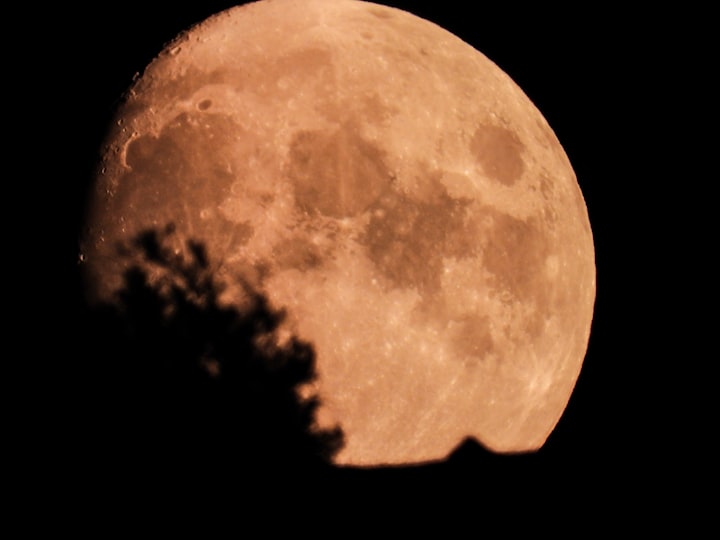CAN you see the FLAG on the moon with a Telescope?
The moon's dark secret they didn't want you to know!

In the vast expanse of the night sky, the Moon has always been a celestial muse, captivating the imagination of humans for centuries. From romantic poets waxing lyrical about its silver glow to scientists probing its enigmatic surface, our lunar neighbor continues to hold a special place in our hearts.
But what about the tantalizing question that's been on stargazers' minds for ages? Can you see the flag on the Moon with a telescope? Buckle up, because we're about to embark on a journey through the cosmos, filled with suspense and wonder.
The Moon, Our Cosmic Companion
Before we dive into the celestial detective work, let's take a moment to appreciate the Moon. As Earth's one and only natural satellite, it has silently witnessed the rise and fall of empires, the birth of civilizations, and the leaps of human exploration. We've sent missions to its surface, collected samples, and even left behind some very intriguing artifacts.
One such artifact is the American flag. It's no ordinary flag. It's a symbol of human achievement and the triumph of science and engineering. On July 20, 1969, during the Apollo 11 mission, astronauts Neil Armstrong and Buzz Aldrin planted the flag on the Moon's surface, marking a monumental moment in history. But can we spot this symbol of human ambition from Earth? Let's unravel the mystery.
Telescope Tales
Telescopes have long been the trusty companions of amateur astronomers and professional stargazers alike. They've allowed us to peer deep into the cosmos, revealing the intricate beauty of distant galaxies, nebulas, and planets. Yet, when it comes to something as close as our lunar neighbor, there's an element of intrigue and suspense.
The flag planted by the Apollo 11 astronauts is a tangible connection between our home planet and the Moon. It's a beacon of human exploration, and for decades, people have wondered if it's visible from Earth using telescopes. The answer? Well, it's a bit like peering into a cosmic treasure hunt.
The Limits of Observation
Imagine you're standing on Earth, looking up at the Moon through a telescope. You'd be in for a visual treat. Craters, mountains, and vast lunar plains would come into sharp focus, revealing a landscape sculpted by eons of cosmic collisions. But spotting a tiny flag amidst this vast lunar terrain is akin to finding a needle in a haystack.
The American flag left on the Moon is relatively small, measuring about 3 feet by 5 feet. To put it into perspective, the Moon itself is roughly 2,159 miles in diameter. That's a colossal difference in scale! So, even with a powerful telescope, spotting the flag is like trying to find a speck of dust in your living room while looking through a keyhole.
The Hubble Hiccup
Now, you might be thinking, "What about the Hubble Space Telescope? Surely, that powerful piece of technology can solve the mystery." Well, not quite. The Hubble Space Telescope is a marvel of modern astronomy, capable of capturing breathtaking images of distant galaxies and nebulae. However, when it comes to imaging the Moon, it faces some unique challenges.
The Hubble is designed to observe distant objects in the cosmos. Its focus is on galaxies, stars, and other celestial wonders far beyond our lunar neighbor. Attempting to turn its gaze toward the Moon would be like using a sledgehammer to crack a nut. The Hubble's high-resolution imaging capabilities are optimized for objects much farther away, making it ill-suited for peering at the flag on the Moon.
Astronomy in the Age of the Amateur
While the Hubble might not be our lunar detective, there's still hope for those who yearn to catch a glimpse of the Moon's historic artifact. Enter the world of amateur astronomy, where dedicated stargazers armed with telescopes, determination, and a touch of moonlit magic seek to unravel the lunar mystery.
Amateur astronomers across the globe have turned their telescopes toward the Moon, hoping to capture a hint of the Apollo 11 flag. Some have used powerful telescopes with advanced imaging equipment, while others have employed their ingenuity and patience.
The key to success in this lunar treasure hunt is to harness the power of high-quality telescopes with substantial apertures. A larger aperture means more light-gathering power, allowing for better resolution and clarity. Observing the Moon during favorable conditions, such as when it's in its crescent phase, can also increase the chances of spotting the flag's faint presence.
The Hunt Continues
As the nights turn to weeks and then to months, amateur astronomers continue their quest to glimpse the Apollo 11 flag. With perseverance and a dash of lunar luck, some have reported fleeting sightings of what they believe to be the flag's silhouette. However, these sightings are often met with skepticism, as the evidence remains inconclusive.
The challenge lies in distinguishing the flag from the natural features of the lunar surface. Shadows, craters, and variations in lighting can all conspire to create optical illusions that mimic the flag's appearance. It's like chasing shadows in the moonlight, and the true answer to the question remains tantalizingly elusive.
A Symbol of Human Ambition
In the end, the quest to see the flag on the Moon with a telescope isn't just about capturing a distant image. It's about celebrating human ingenuity and exploration. The Apollo 11 flag serves as a symbol of our collective dreams and aspirations. Whether or not we can spot it from Earth, its presence on the lunar surface is a testament to the power of science, engineering, and the relentless spirit of discovery.
So, can you see the flag on the Moon with a telescope? The answer, like so many mysteries in the cosmos, is shrouded in suspense and uncertainty. It's a challenge that continues to captivate the imaginations of astronomers, both amateur and professional, as they gaze upward, searching for a tiny piece of history amidst the vastness of space.
Whether or not you believe in the flag's visibility, one thing is certain. The Moon will forever remain a source of wonder and inspiration, a celestial companion that continues to beckon us toward the stars.
About the Creator
Yusuf Alam
Crafting Words into Amazing Stories | Freelance Copywriter | Turning Ideas into Impact






Comments
There are no comments for this story
Be the first to respond and start the conversation.